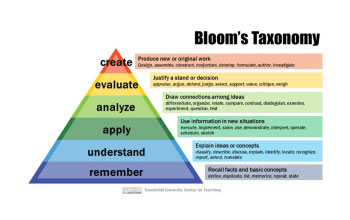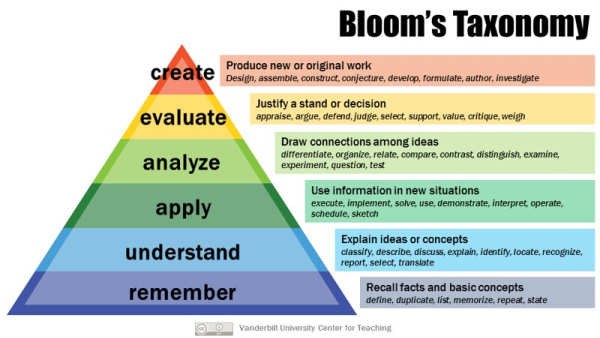
Why are business simulation games valuable for learning?
Business simulation games can be one of the most powerful teaching methods available for business subjects. In this article we’ll go into some of the learning science that makes it clear why business simulations are such a valuable learning activity.
Are you unfamiliar with business simulation games? In short, they are learning games where learners manage virtual companies, giving them a risk-free arena to apply their skills.
I’ve heard many educators promote simulation games because they think their students learn more when they’re having fun. It’s not that this is wrong per se (simulations can definitely be a fun learning experience), but I don’t think this does justice to the value of business simulations.
To understand what makes business simulations a powerful teaching method, let’s quickly recap some learning science fundamentals.
A recap of Bloom’s taxonomy
Any learning activity will have learning goals, but it’s not binary whether the student has or hasn’t learned. There are different orders of understanding from simply remembering facts (the lowest level), to being able to create new ideas and knowledge from their understanding (the highest level). These levels are neatly categorized in Bloom’s taxonomy.

(Source: Blooms Taxonomy, Vanderbilt University)
The most important implication of Bloom’s taxonomy is that learners need higher-order learning activities to get to a higher level of understanding.
For instance the third level is application. To be able to apply a concept you have to practice applying the concept through exercises.
However the application level is rarely the end goal. Education should prepare learners to take their new knowledge beyond the classroom. This requires that they reach a level of understanding where they’re able to analyze, evaluate and create based on their understanding. The only way to achieve this is to engage learners in more complex learning activities.
This is where simulation games come in.
Simulation games in general give the learner a risk-free environment where they can consume and interact with the subject matter. With business simulations you’re given control over a virtual company that you manage through scenarios. This gives learners a unique opportunity to apply their knowledge in a much more complex case than what they’re able to in most other cases.
Why is “simulating” a useful learning activity?
“Simulating” isn’t really an isolated activity like reading a text or doing an exercise. It’s a mix of many activities. Learners will read and process the game content, formulate problems, discuss solutions and make decisions. They then observe the outcomes and finally reflect and internalize what they’ve learned from their experience.
This kind of mixed activities are exactly what Bloom’s taxonomy says that learners need to develop a deeper understanding of a subject. A prerequisite is of course that the challenges and decisions they face are directly linked to the desired learning goals.
Let's find the perfect simulation for your course
Contact usUnique benefits of business simulations
We have mentioned traits of business simulations that deserve more attention. These traits are uniquely beneficial to business simulations as a teaching form. Other than real-world internships there are no other learning activities in business education that give learners these benefits.
1. Decisions made in a simulation have consequences.
By contrast, if students get a case assignment in for instance a strategy course the final product is normally an analysis and a recommendation for the case company. Of course cases based on real companies have a benefit in that they have the complexity of the real world. A simulation on the other hand sacrifices some of the real world’s complexity for the ability to implement the recommendations. There’s tremendous learning value in reflecting on why your company soars or plumits. This makes it safe to say that business simulation is the most cost-effective way to get this kind of experiential learning.
2. The business context in a business simulation is cross-disciplinary.
Most business courses are disciplinary silos like finance, marketing or operations. A simulation provides learners with a rare chance to see how topics from different courses and disciplines affect each other. This adds complexity compared to single-discipline exercises, but it also gives the learners new perspectives. For instance, in the Hubro Marketing simulation learners make marketing decisions while also considering the cost and benefits of their choices. This forces learners to think critically about how they make marketing decisions.
How do you succeed with business simulations?
Business simulation games provide learners with a rare opportunity to work hands-on with the subject matter. If done right, business simulation games can be one of the most powerful teaching methods available for business subjects.
However, there’s more to it than just giving the learner a game and leaving them alone. Hubro Education has developed a methodology for how to succeed with business simulation games. Our approach is based on academic literature, input from hundreds of dedicated educators and simulations with thousands of students.
You can read about Hubro Education’s method for how to succeed with business simulations here.
Book a free trial meeting to see how it works
Get a free trialExplore more of our blog for business education, educational business simulations and remote teaching methods.
Back to the blog